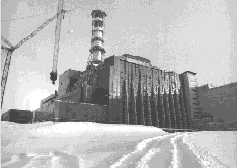Have you considered this?
"In the present state of scientific knowledge, it is still impossible to forecast earthquakes. Nevertheless, we know which parts of the globe are most likely to be struck. And in the center of perhaps the most active of these zones is the Iranian Plateau - where at least one nuclear reactors is now under construction, with more planned.
Over the past century or so, Iran has experienced more earthquakes than any other part of the globe - at least one tremor each day. Last week’s earthquake in the south-central province of Lorestan is the latest reminder of that fact. [emphasis mine]
Since Iran started properly recording earthquakes in the late 1940s, it has suffered at least one “big one” every decade: Torud (1950s), Boein-Zahra (1960s), Tabas-Golshan (1970s), Qazvin (1980s), Rudbar-Tarom (1990s) and Bam (December 2003). By official estimates, these earthquakes claimed the lives of 126,000 people, injured a further 800,000 and made 1.8 million people homeless. At times, the damage from one quake amounted to more than 7 percent of the nation’s GDP.
It is thus surprising that the safety aspect of Iran’s nuclear program has received little attention."
So says Amir Taheri.
 He has many other troubling facts about Iran and nuclear reactors, even those of the peaceful variety.
He has many other troubling facts about Iran and nuclear reactors, even those of the peaceful variety.Ironic, isn’t it, that Iran will eventually become another Chernobyl? That’s one appointment with destiny they can't evade. And the rest of the world is simply along for the ride.

Hat tip: Sixth Column

2 comments:
One of the other places where there are lots of earthquakes is Japan, where there are also lots of nuclear reactors.
Well, that's a comforting thought!
Still, why do I intuitively trust that the Japanese have probably taken that into account? Is it because they don't seem to have a death wish?
Thanatos rules Iran.
Post a Comment